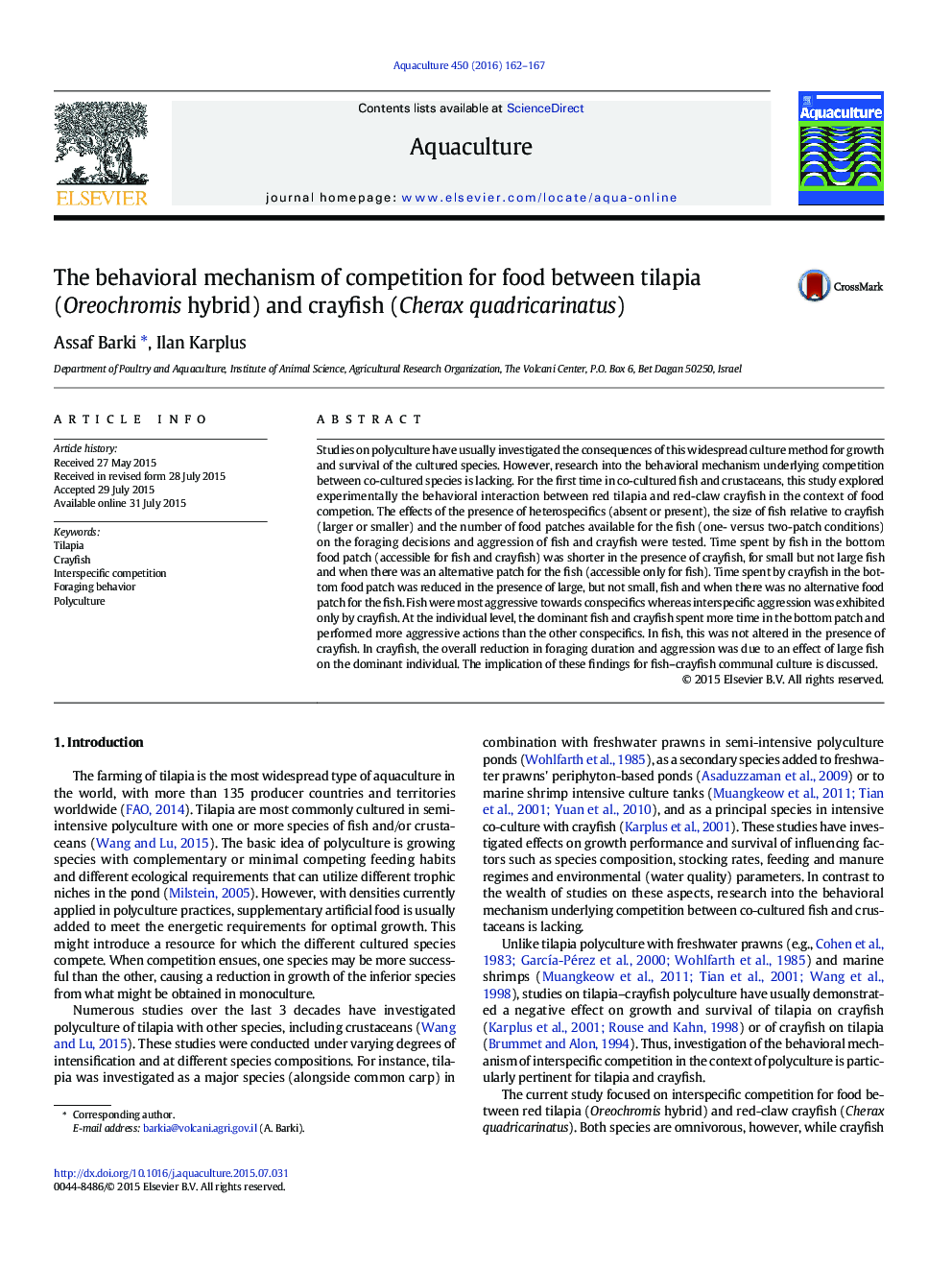| Article ID | Journal | Published Year | Pages | File Type |
|---|---|---|---|---|
| 8494324 | Aquaculture | 2016 | 6 Pages |
Abstract
Studies on polyculture have usually investigated the consequences of this widespread culture method for growth and survival of the cultured species. However, research into the behavioral mechanism underlying competition between co-cultured species is lacking. For the first time in co-cultured fish and crustaceans, this study explored experimentally the behavioral interaction between red tilapia and red-claw crayfish in the context of food competion. The effects of the presence of heterospecifics (absent or present), the size of fish relative to crayfish (larger or smaller) and the number of food patches available for the fish (one- versus two-patch conditions) on the foraging decisions and aggression of fish and crayfish were tested. Time spent by fish in the bottom food patch (accessible for fish and crayfish) was shorter in the presence of crayfish, for small but not large fish and when there was an alternative patch for the fish (accessible only for fish). Time spent by crayfish in the bottom food patch was reduced in the presence of large, but not small, fish and when there was no alternative food patch for the fish. Fish were most aggressive towards conspecifics whereas interspecific aggression was exhibited only by crayfish. At the individual level, the dominant fish and crayfish spent more time in the bottom patch and performed more aggressive actions than the other conspecifics. In fish, this was not altered in the presence of crayfish. In crayfish, the overall reduction in foraging duration and aggression was due to an effect of large fish on the dominant individual. The implication of these findings for fish-crayfish communal culture is discussed.
Related Topics
Life Sciences
Agricultural and Biological Sciences
Aquatic Science
Authors
Assaf Barki, Ilan Karplus,
